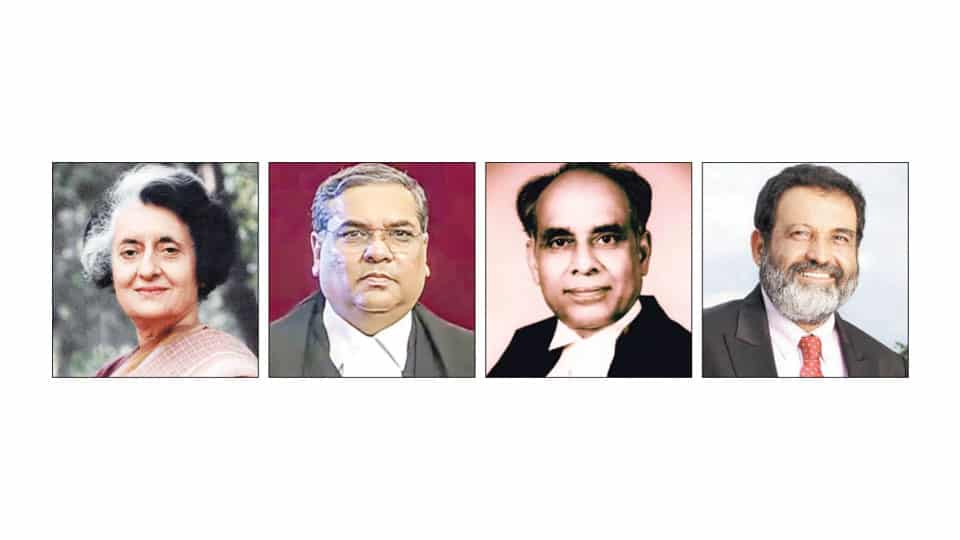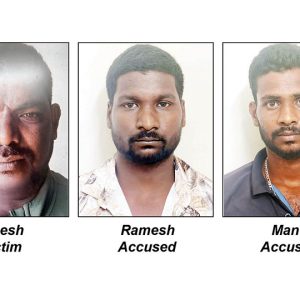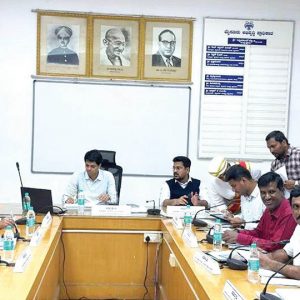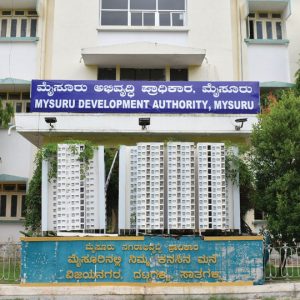
Humpty Dumpty sat on a wall,
Humpty Dumpty had a great fall;
All the king’s horses and all the king’s men
Couldn’t put Humpty together again.
— A Nursery Rhyme
Writing about JRD Tata, the iconic Constitutional Jurist late Nani A. Palkhivala said that JRD Tata knew that the planes of Utopia and Reality never coincide and that the Ideal cannot be Institutionalised nor the Institution Idealised.
I recalled these words while watching on TV and YouTube the ceremonies and functions connected with the outgoing Chief Justice of India (CJI) Dhananjaya Yeshwant Chandrachud and the incoming Chief Justice of India Sanjiv Khanna.
Judiciary is one of the pillars of Democracy. I would liken it to be the watchdog of Democracy, safeguarding Democracy from internal and external threats. The weapon in the hands of judiciary to safeguard Democracy is our Constitution. It is very well produced by the son of the soil Dr. B.R. Ambedkar, who knew the history, geography, demography, sociology and the religions of the divided country in all its dimensions. The Constitutional weapon he had so forged, he thought, would be powerful enough against those who would want to diminish or destroy Democracy to remain in power without entitlement. And yet he had his apprehensions. Which is why he said as early as 26th January 1950 not to lay our liberties at the feet of even a great man (or woman) or trust him (or her) with powers which enable him (or her) to subvert our Constitution. Indira Gandhi in 1975 did exactly that — subverted judiciary.
Unfortunately for the country his fears came true in 1975 when internal Emergency was declared by the Congress Government led by Prime Minister Indira Gandhi. The Constitutional weapon was blunted.
The judicial watchdog, however, did bark and bite at the first instance to protect Democracy. It was when Justice Jagmohanlal Sinha of the Allahabad High Court (now Prayagraj) gave his judgement on the petition filed by Raj Narain against Prime Minister Indira Gandhi’s election to the Lok Sabha in 1971. The judgement was pronounced on 12th June, 1975 and it went against Mrs. Indira Gandhi. Soon, despite the Supreme Court’s decision, a State of National Emergency was declared on 25th June 1975 — just 13 days after the Allahabad High Court judgement. Result: Freedom gained in 1947 was lost in 1975 — just 28 years after we got freedom. Another freedom struggle was launched under Loknayak Jayaprakash Narayan’s leadership and Dr. Ambedkar’s Constitution, being resilient, came to our rescue. Today we are a Democracy and a free country.
Now let me revert to Justice Sanjiv Khanna assuming office as 51st Chief Justice of India. Here, there appears to be the play of a tweaked natural justice. To find out why, we have to go back to 1976. Immediately after Emergency was imposed, opposition leaders and many others who opposed the Emergency were jailed under the new draconian law MISA (Maintenance of Internal Security Act). Some victims of the arrest filed a writ in the Supreme Court in the case of ADM Jabalpur Vs Shivkant Shukla.
In the majority decision, led by Chief Justice Ajit Nath Ray, the Court held that during Emergency right to move any Court for enforcement of fundamental rights, including those under Article 21 — protection of life and personal liberty — could be suspended. During Emergency, judiciary had no jurisdiction to review such unlawful detentions. However, there was one sane voice in that five-Judge Bench. That was the voice of Justice Hans Raj Khanna, who gave dissenting judgement. He was the uncle of the present new Chief Justice Sanjiv Khanna.
When the controversial case was heard in 1976, H.R. Khanna was to be the next Chief Justice of India. But he was denied the promotion because of his dissenting judgement in the case. A junior Judge of Khanna, Mirza Hameedullah Beg, was made the Chief Justice of India. Indira Gandhi had her revenge.
Now old timers, who were witness to Indira Gandhi’s Socialism, Secularism and abuse of the Constitution for survival as Prime Minister, may find the appointment of Sanjiv Khanna, a cousin of H.R. Khanna, as a penance for a historical injustice. A case of good karma driving away the bad karma of the Supreme Court. A case of Supreme Court’s purification, shuddikarana!
Be that as it may, Judges may come and Judges may go but our present broken judicial system will continue like now. In a television programme, T.V. Mohandas Pai, Chairman of Aarin Capital, former CFO and Board Member of Infosys, says that we have a broken judicial system and there is an urgent need to fix it. It is the opinion of every litigant in our country also. The main cause for the present anarchical law and order in our society, rampant corruption in our government and inefficiency in the administration, is the lethargic and archaic judicial system.
The judges are much burdened with the day-to-day routine work, they cannot fix this broken justice system. If they could not reform the system to fit it into Indian ethos and make it efficient and cost effective in the last 76 years, why expect them to do it now or in the future?
Prime Minister Modi has four more years in office. He would be leaving a lasting legacy if he brings the judicial reformation before he lays down the office. A Judicial Reformation Commission may be set up with a non-judicial person like Mohandas Pai as its Chairman to avoid the possibility of succumbing to enlightened self- interest by the Judge who sits in the Commission as its Chairman. Other members could be from the legal fraternity and other walks of life. There is a lesson to learn from the nursery rhyme above! If the king’s men could not put Humpty together again, others should do the job.
Yes, JRD Tata asked us to get down from the planes of Utopia of present day institutions that are idealised, like Judiciary. That means we must get down to existential lived reality of our people who seek justice without delay and at an affordable cost. As he said, no institution can be idealised, specially Judiciary.
e-mail: [email protected]








Recent Comments